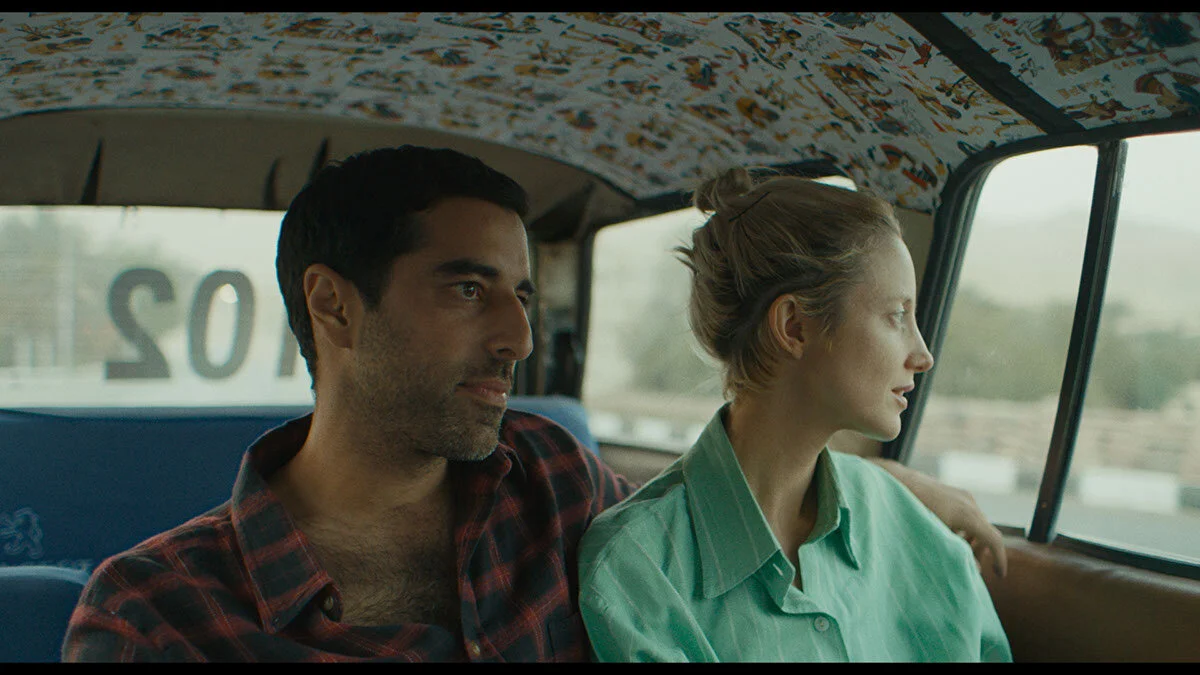MOVIE REVIEW: Luxor
LUXOR— 3 STARS
LESSON #1: THE MYSTIQUE OF THE EGYPTIAN NILE-- With its vast history and continental importance, the sites and cities of the Nile River are an undeniable draw and grandiose settings for films. The tans of sands and stone rise to swirling colors of natural oases and modern human settlement. Call it centuries of European colonization and spoiling, but the region’s combinations of cultures and refinements old and new are irresistible. Agatha Christie didn’t set one of her murder mystery novels there for nothing.
If a storyteller was going to reunite two former lovers for a week of Linklater-esque strolls of rekindled affection and unsettled regrets, why not set it among the tombs and temples? Those places whisper if you listen. So too does the lovely and quiet film Luxor from Zeina Durra. She took 18 days to soak in the energy of its titular city of Upper Egypt and channel it into a pair of wandering souls. The results are beautiful yet slight.
Andrea Riseborough plays Hana, a field doctor from England granted a furlough. She chose the familiar Luxor, a place of architectural wonders she’s enjoyed before. Hana settles into a suite at the 113-year-old cosmopolitan Winter Palace Hotel on the banks of the Nile with an as-yet unexplained malaise for someone with the chance to enjoy the lushness and lounge of such a place. That despondency becomes clear when she beds a cocky American expat (Michael Landes) from the hotel bar on a one-night stand, gaining the womanly help of casual fellow guest Dunia (Egyptian star Shereen Reda).
Each day, Hana embarks on self-guided travel through the city and its landmarks, including the tremendous monuments of its West Bank including Ramesseum, Medinet Habu, Deir el-Medina, and the Valley of the Kings. Even in the film’s swift guerilla schedule, short film specialist cinematographer Zelmira Gainza took full advantage shooting these impressive locations secured by location scout Khaled Kama. Through Hana, we gain little nuggets of a place “pregnant with history,” curated on-screen and behind-the-scenes by archaeology and Egyptology advisor Salima Ikram. That aforementioned draw of Lesson #1 gets greater with every pristine view of ancient ethnic finery seen and touched by our protagonist.
On one ferry crossing, Hana gets recognized by Sultan, a local archaeologist and old friend played by TV star Karim Saleh of Transparent and Counterpart. The mutual courtesy in seeing each other again is the type that comes from past closeness. The two begin to spend their days and nights together catching up. With each episodic visit to another ruin followed by that observational camera of Gainza, we learn about the nostalgic frivolity of their previous relationship.
LESSON #2: WHEN OLD FLAMES MEET AGAIN-- It doesn’t matter if it’s been one year or 50. When former intimate lovers see each other again after any significant absence, magnetic companion comforts wrestle with aged distance and separate responsibilities. Hana laments “Don’t you miss how hopeful we were... about us, the world, time, everything? I wish it was 20 years ago again.” Old flames are indeed landmarks for people’s souls. They are vessels for either unfulfilled feelings or finished mistakes. Describing the passage of time with the catacombs, a later conversation waxes how there’s “something lovely about it being so faded and imperfect.” Love can age that way too.
LESSON #3: DAMAGES THAT CAN AND CANNOT BE HEALED-- Moreover with each daily chapter, we learn increasingly difficult details on the morose funk that has seemingly defeated and changed Hana in the two decades since she and Sultan last spent quality time together. She is on leave from a war trauma unit from the Jordanian border with Yemen looming as her next assignment. With the patient care and charm of Sultan combined with walking through old haunts, Hana’s spirit refills. She needed it even if it can’t last.
There’s another great line in Luxor that says this is “a place that whispers to you if you listen.” It’s an effect threaded into the soundscape of the film by sound designer Frédéric Le Louet (The Informer) wafting in and out of the score from documentary composer Nascuy Linares (Embrace of the Serpent). The tourists around Hana hear tales of reincarnation and the passionate myths of polytheistic demigods. Whether she believes them or not does not compare to where her conflicted self esteem hangs precariously during this short holiday.
Luxor is Durra’s first feature in ten years since The Imperialists Are Still Alive!, so bravo to more female voices in film. This would make an excellent double feature with Ruba Nadda’s 2009 underseen romance Cairo Time with Patricia Clarkson and Alexander Siddig. Luxor’s views may be as bright and sunny as a postcard, but its tangible romance is not. Rather, this movie is about the undercurrents within the flow of people, even if they are standing next to a mighty river. This pace and volume of its quiet and meditative drama, granted, are admittedly challenging.
LOGO DESIGNED BY MEENTS ILLUSTRATED (#926)


